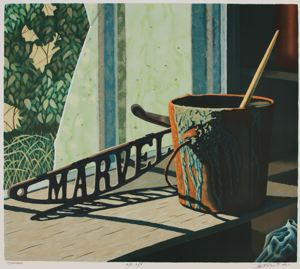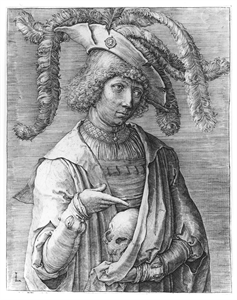
Joe Price (aka Joe Allen Price)
American, 1935–2019
American, 1935–2019
Marvel
1981
Object Type:
Print
Dimensions:
14 1/4 in. x 15 7/8 in. (36.2 cm x 40.32 cm)
Medium and Support:
Screen print on paper
Accession Number:
2011.0012.0023
Credit Line:
Gift of the artist and M. Lee Stone Fine Prints
Copyright:
© Montgomery Museum of Fine Arts
Keywords
Click a term to view the records with the same keyword
Portfolio List
Click a portfolio name to view all the objects in that portfolio
This object is a member of the following portfolios:
Your current search criteria is: All Object records.

 by Artist (747)
by Artist (747)
